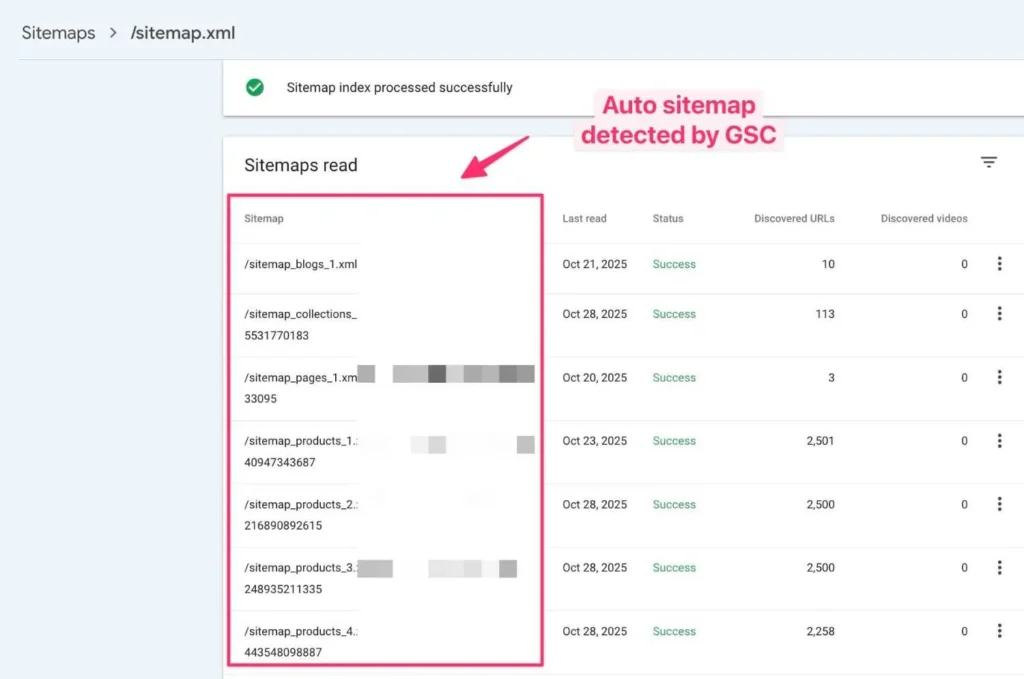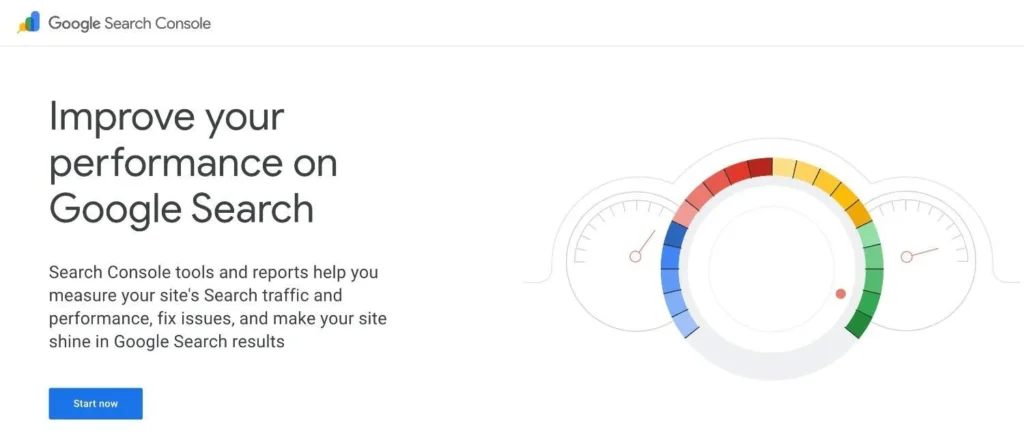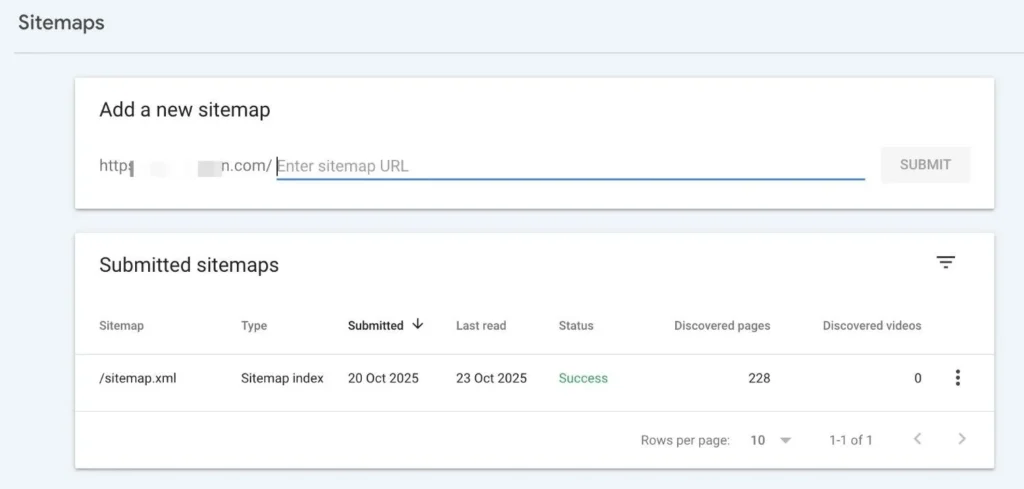Want more traffic to your store?
We’ll check your SEO, give simple tips, and set up a quick call to talk.
If you want Google to index your shopify store faster and give your product and collection pages a fair chance to rank, submitting only the sitemap index file inside Google Search Console is not enough. You should submit each important sitemap individually. This gives you clear visibility on which parts of your site are indexing well and which sections are struggling. When you gain that clarity, you fix issues faster and improve organic growth in a more predictable way.
Most ecommerce sites do not actually have a ranking problem at the start. They have an indexing problem. If your pages are not indexed, there is no chance of ranking. No ranking leads to no organic traffic. No organic traffic means no sales from search.
Submitting individual sitemaps is a small step that gives you a deeper understanding of how Google views your site. When your data becomes clear, your SEO decisions become sharper and more accurate.

Hidden problem hurting your store
Many ecommerce brand owners believe their technical SEO setup is done after submitting the sitemap index in Google Search Console. It feels like a completed task. You tell Google where the pages are and then move on to other work. In reality, this is where the mistake begins.
We have handled SEO for many ecommerce stores over the years, and we see the same pattern almost every time. The store submits only the sitemap index. They never submit the product, collection, blog and page sitemaps individually. This one setup mistake blocks them from seeing what is truly happening inside Google Search Console.
What you cannot see, you cannot fix.
Without clear data, ecommerce founders rely on guesswork. Guess based SEO is expensive, slow and rarely produces consistent growth.
The pain that comes from submitting only the index
To understand why this matters, imagine this common situation. You launch new products, publish content, invest in SEO work and build links. Weeks go by and you wait for traffic to increase. When nothing improves, you log into Google Search Console expecting answers.
Instead, you see combined high level data that tells you nothing useful.

Here is what happens when only the sitemap index is submitted:
- You see total indexed pages only
- You cannot identify which part of the site is struggling
- You do not know if the problem is with products, collections or blogs
- You cannot measure the impact of SEO improvements by category
- You get data that is too broad to guide serious action
This leads to frustration. You know something is wrong but you cannot locate the issue. So you start fixing things randomly. A little technical work. A little content update. Some internal linking. Some image compression. You keep trying different things with no clear direction.
Random SEO fixes waste both time and energy.
When you do not submit individual sitemaps, you are doing SEO in the dark.
A real experience from a shopify store
To show you the real impact, here is a case from an ecommerce store we worked with. This example will make the picture clear.

The store had around 10K URLs, made up of
- Product pages
- Collection pages
- Blog articles
- Standard pages such as About and Contact
The store owner had already submitted the sitemap index in Google Search Console. It gave them some confidence because Google was crawling the site. But there was one problem. Their organic traffic was dropping. New products were taking too long to show up in search results.
When we opened their Google Search Console, we saw only one combined indexing report for the entire site.
There was no separation between product, collection, blog or page indexing. It was impossible to pinpoint where the indexing issue was coming from.
The very first action we took was to submit each sitemap individually.
Within 2 weeks, we got separate indexing graphs for each section.
Each section of the site was performing very differently. Some page types were getting indexed consistently, while others were barely making it into Google’s index at all. This breakdown exposed clear priority areas that were previously hidden when looking at a single combined indexing graph.
If we had not separated the sitemaps, the poor product indexing would have stayed hidden. The store owner would have invested in the wrong type of SEO work.
Once we saw the truth, we focused only on improving product indexing for three weeks. We fixed product descriptions, removed thin variants, added internal links, and improved page speed.
In twenty one days, product indexing increased from forty two percent to sixty seven percent. Within sixty days, the store saw a nineteen percent increase in organic sales.
One simple change unlocked the correct SEO path.
Why Google does not show separate reports automatically
Many store owners assume Google will show separate indexing reports because Google can detect all the sitemaps inside the index. But Google Search Console works differently.
Submitting only the sitemap index helps Google discover your sitemaps, but Google will not create reporting for each sitemap unless you submit them individually. It is your responsibility to activate this visibility.
Think of it like giving someone a building address without telling them which apartment you live in. They can reach the building, but cannot arrive at your door without your guidance.
Google sees your sitemap index. But until you manually submit each sitemap, Google Search Console will not show you the indexing health for each part of your site.
What you gain by submitting each sitemap individually
Once you add individual sitemaps inside Google Search Console, you unlock four strong advantages.
Clear indexing visibility
You can see which sections of your site are healthy or weak. If product indexing is slow, you work there. If blogs index faster, you know Google trusts that content format.
Faster SEO diagnosis
When an indexing drop happens, you instantly know where it occurred. If product indexing falls, you look at product pages. No time wasted guessing.
Better content strategy decisions
Separate data shows which content type Google rewards more for your site. If blogs index quickly and rank faster, you invest more there. If collections stay slow, you improve those areas.
Measurable SEO improvements
Once you make changes, you can track indexing progress inside each sitemap. You move from random SEO to measurable SEO.
So, individual sitemaps turn guessing into data driven action.
Sitemap index only vs individual sitemap submission
Submission Style | What You See In GSC | Result |
Only sitemap index submitted | One combined indexing report for all URLs | Hard to diagnose issues. Slow action. |
Individual sitemaps submitted | Separate indexing reports for products, collections, blogs and pages | Fast diagnosis. Clear insights. Strong SEO decisions. |
How to submit individual sitemaps in Google Search Console
If you already submitted the sitemap index, do not remove it. You only need to add the individual ones.
Follow these steps:
Log in to your Google Search Console

Open the Sitemaps section

In Add a new sitemap, enter your product sitemap URL
Submit the product sitemap

Submit the collection sitemap

Similar way, submit the blog sitemap, pages.
Now wait a few days and review indexing data for each
How we use individual sitemaps to fix indexing faster
We want to share how we personally handle this when working with ecommerce brands. Our goal is always simple. Find the real issue fast and fix the real issue fast. This keeps SEO efficient and focused.
Here is our usual process:
- Submit individual sitemaps if they are not already added
- Wait a few days for data to appear
- Compare indexing rate in each sitemap
- Identify the lowest performer
- Fix that section only
- Track the improvement by watching the sitemap graph
This approach keeps SEO sharp. Instead of trying to fix the whole website, we focus on the weakest part that is blocking growth.
This is how you prevent wasted SEO effort.
Below are common reasons for weak indexing by sitemap type. This helps you troubleshoot instantly.
Product pages often fail to index because of
- Thin descriptions that provide no depth
- Duplicate content across similar products
- Weak internal linking to product detail pages
- Slow loading images on product pages
- Too many low value variants with no unique content
Collection pages often struggle because of
- Very short collection descriptions
- No unique value or content
- Weak internal linking structure
- Poor topical relevance at category level
Blog pages often fail because of
- Wrong topics that do not match real search demand
- No internal links from products or collections
- Low trust from Google if the site is new
Once you have individual sitemap data, you can match the problem to the right fix.
The bigger picture for ecommerce SEO
Many business owners focus on content and backlinks before fixing indexing. That is like building a shop in a hidden street and wondering why nobody visits.
Indexing is the first foundation of SEO. Without indexing, your pages do not exist in Google search. If they do not exist, they cannot rank. If they cannot rank, you will not get traffic or sales.
Most ecommerce stores lose months of progress because they do not know where indexing is stuck. Submitting individual sitemaps solves this problem with a small effort. It gives you control over your SEO direction.
As your store grows, this becomes even more important. Once you reach fifty thousand or more URLs, separate sitemap reporting becomes your SEO control panel. You move from random fixes to structured improvements that bring results.
Frequently Asked Questions
Why should I submit individual sitemaps when Google already discovers them?
Google may detect the sitemaps in your index file, but Google Search Console will not show separate indexing reports unless you submit them individually. If you want to see which part of your site is struggling, submit each sitemap one by one.
Will submitting individual sitemaps improve my rankings?
Submitting individual sitemaps by itself will not boost rankings. It helps you identify where indexing issues are. Once you fix the weakest section, rankings improve as a result of better indexing.
Should I remove the sitemap index after submitting individual sitemaps?
No. Keep the index and the individual sitemaps. The index helps discovery. The individual entries help you see reporting for each sitemap.
How many sitemaps should an ecommerce store submit?
At minimum, submit product, collection, blog and pages sitemaps. If your store has many products, you can split product sitemaps by category or brand for more clarity.
My products are not indexing. Will individual sitemaps fix it?
Individual sitemaps do not fix indexing by themselves. They show whether the issue is on product URLs. Then you work on content, internal links and page speed to fix the problem.
How long does it take to see indexing data after submitting sitemaps?
You can see some data within a few days. Full clarity can take one to two weeks. New or large sites may take longer.
Does this apply only to Shopify stores?
No. This applies to any platform. Shopify, WooCommerce, Magento, BigCommerce and custom builds. Indexing behaviour is the same because it is a Google process.
Final Thoughts
Indexing is the base of your SEO success. Without indexing, everything else becomes a waste of time. Submitting individual sitemaps takes only a few minutes, but the clarity it gives can save you months of confusion and slow growth.
If you want to fix your SEO direction and grow your store through search, start with this.
Open Google Search Console, submit your individual sitemaps and get the visibility you need to make smart SEO decisions.
Once you have this clear view, every SEO action you take becomes more focused. Focus brings results.

